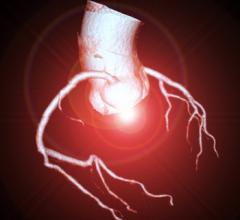
Kim Phelan, Editor
I only just heard the term “positive remodeling” for the first time last fall, and I assumed it was something, well, positive, like a self-mending process of some sort. But in the cardiac context of arterial remodeling, which refers to the build-up of plaque in the coronary arteries, positive remodeling is the worse of two types.
Some six months later I have finally found the opportunity to cover this intriguing subject, albeit in a condensed fashion. One of the great discoveries is that CVCT is gaining acceptance as a viable tool for detecting this deadly condition that is closely associated with vulnerable plaque.
Nevertheless, as I listened to Dr. Edward Shapiro from Johns Hopkins expound on the encouraging capability of CVCT to noninvasively visualize positive remodeling in the arteries, I could not disguise my frustration that so much time will elapse and so many lives will be lost before efficacy studies will prove out the safety for widespread early-detection screening with CT. Perhaps as many 300,000 people will experience their first and only symptom of positive remodeling this year — sudden death by M.I.
Many groups and professional societies have made CT research and education a top priority. Among them, the Society for Cardiovascular Angiography and Interventions (SCAI) is taking a leadership role in cardiac CT. In January, SCAI sponsored its second intensive course on CVCT: “Cardiac CT and CT Angiography” in Phoenix, and CT takes centerstage at numerous intervals throughout SCAI’s annual scientific sessions and exhibition in Chicago, May 10 to 13. (Get full details at www.scai.org)
I personally plan to listen to Dr. Greg Stone’s presentation May 12, titled “Prospects for the Invasive and Non-Invasive Identification of Vulnerable Plaque,” which I strongly suspect will comprise some discussion of CT. (Dr. Stone is vice chairman of the Cardiovascular Research Foundation, professor of Medicine at Columbia University Medical Center and a practicing interventional cardiologist at New York-Presbyterian Hospital/Columbia University Medical Center.) SCAI also features an address by Dr. Robert Schwartz on CT Angiography: The Real Picture.
The real reimbursement picture for CT is being gradually colored in, again, thanks to the advocacy efforts of numerous societies, including ACC and SCAI. SCAI posts an article on its Web site stating its commitment to ensure that “interventional cardiologists are free to incorporate CT into their practices and receive equitable reimbursement for imaging services.
“The successful development of cardiac CT CPT codes [effective since January] was an important step in that direction,” SCAI’s article reports. The category III CPT codes “will distinguish cardiac CT from the less labor-intensive CTA of the thorax and pave the way for permanent cardiac CT CPT codes as early as 2008.”
The absence of assigned payment amounts to the new codes means that reimbursement must currently be negotiated with each local health insurance carrier, according to SCAI — the organization is participating in the development of specific payment recommendations.
And so slowly the planets align, so to speak, to eventually create the environment in which the gap is closed between advanced medical technology and its accessibility to all who need it. I suppose that’s something to be
positive about.


 December 11, 2025
December 11, 2025 









